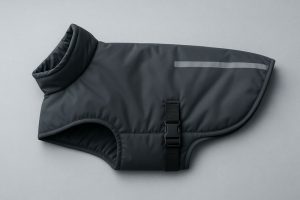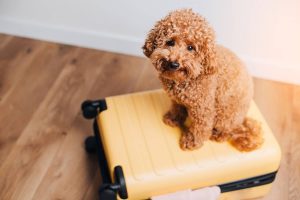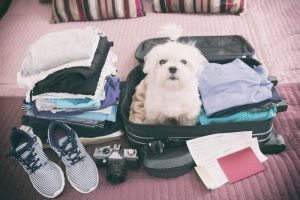Getting ready to walk the dog sounds simple. Grab the leash, call their name, head out the door. Easy, right? Not exactly. A quick walk can turn into a big problem fast if something unexpected happens—like a loose collar or a sudden loud noise that spooks your pet. That’s why having the right gear isn’t just about comfort. It’s about keeping pets safe.
Sure, walks are fun and exciting for dogs, but they also come with risks. A fence left open, a broken leash clip, or even a door not fully shut can send a pet running. So before the next walk, it’s a smart move to make sure everything is in check—and that includes more than just the leash and harness.
Why Pet ID Tags Matter More Than Most Think
One of the most important pieces of gear is also one of the smallest: the ID tag. It might not seem like a big deal, but it can make the biggest difference. If a pet ever runs off or slips away, an ID tag can help someone return them home fast.
Now, not all tags are created equal. Some are printed lightly or wear down after just a few months. Rain, dirt, and time can rub away names and phone numbers, making them hard to read when it really matters.
That’s where custom pet tags with deep engraving come in. These tags stay readable even after being out in all kinds of weather. Anyone who finds a lost pet can quickly see who they belong to and how to help. They don’t have to guess or wait to take the pet to a vet to check for a microchip. This kind of tag helps right away—right when it’s needed most. You can find some great options for custom pet tags with deep engraving that stay strong no matter how wild your pet gets.
The Gear That Should Always Be on Hand
Of course, tags are just one piece of the puzzle. Walking a pet safely means thinking ahead a little. Here’s what should always be ready before heading outside:
- A well-fitted harness or collar
Collars should fit snugly—not too tight, but not loose enough to slip off. A good rule is to see if two fingers can fit between the collar and the pet’s neck. Harnesses work better for some pets because they give more control and are harder to slip out of. - A solid leash
The leash should be strong, not fraying or stretched out. For dogs that pull or get excited easily, a thicker or shock-absorbing leash helps reduce sudden jerks. - Waste bags
It’s simple—always be ready to clean up. Keeping an extra roll in the car or clipped to the leash helps make sure there’s no awkward moment at the park. - Water
Especially on warmer days or longer walks, pets need water just as much as people. A small collapsible bowl or squeeze bottle makes it easy to give them a quick drink. - A light or reflective item
If the walk happens early in the morning or in the evening, make sure pets can be seen. Reflective collars, leashes, or even clip-on lights help drivers and cyclists spot them from a distance.
What About Microchips?
Microchips are a great safety net, but they’re not enough by themselves. A microchip only works if the pet is taken to someone with a scanner, like a vet or shelter. That takes time. An ID tag gives instant information to anyone who finds the pet.
Plus, not everyone knows how to check for a microchip. But almost anyone can read a tag and call a number. That’s why having both is the safest move—use a microchip as backup, and a clear, engraved tag as the first line of defense.
Preparing for the Unexpected
Even the calmest pet can act out when something weird happens. Loud noises, strangers, or even other animals can make a pet panic. That’s when gear really gets tested.
Some pets pull so hard they snap their leash or twist out of their collar. Others dart through tiny openings before anyone can react. It all happens in seconds.
That’s why everything needs to work together. A strong collar, a tight clip, and a visible ID tag can turn a stressful moment into just a short delay. No one wants to be out calling their pet’s name in the dark, hoping they come back. Good gear makes sure it doesn’t come to that.
Training Helps, But Gear Still Matters
Even well-trained pets need safety tools. Sure, a dog might know how to sit, stay, and come when called. But what happens when they get scared or distracted? Not every situation can be solved with a command.
Using reliable gear doesn’t mean a pet isn’t smart. It just means their human is thinking ahead. And that’s what keeps both sides of the leash safe.
For New Pet Owners (or People Who Haven’t Walked in a While)
It’s easy to miss something when walking a new pet for the first time. Maybe the leash from the last dog is old, or maybe the collar doesn’t quite fit. That’s normal. But it’s worth double-checking before the first walk.
Same goes for people who haven’t walked their pet in a while. Maybe a family member usually handles it, or maybe walks have only been in the backyard. Before heading out into the street or park, take a minute to check the gear.
Ask questions like:
- Can the collar or harness slip off?
- Is the tag still readable?
- Does the leash hold steady when pulled?
- Is there any damage or wear that could cause a problem?
A few seconds of checking can save a lot of stress later.
The Little Things Make a Big Difference
Sometimes the smallest part of a walk is the most important. A tag might seem tiny, but it carries the most important info of all—who a pet belongs to and how to get them home. That matters more than any toy or treat.
There’s also something nice about seeing a well-made tag on a happy dog or cat. It shows they’re loved, protected, and cared for. That little piece of metal says someone is waiting for them at home.
What to Remember
Before the next walk, take a quick look at everything. Make sure the leash is good, the collar fits, and the tag is clear. Don’t rely only on training or hope to avoid problems. Good gear isn’t about being overly cautious. It’s about being smart.
A great walk starts with being prepared. And when pets are safe, everyone has a better time.






